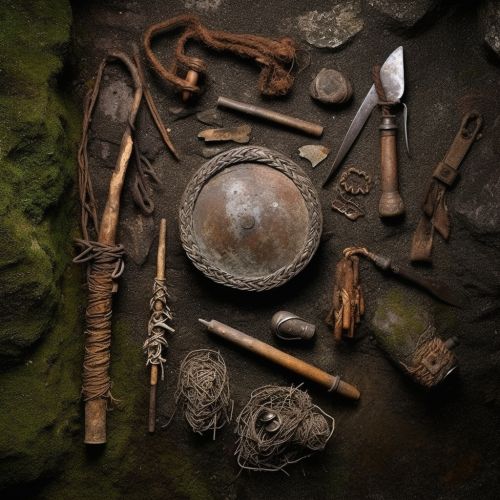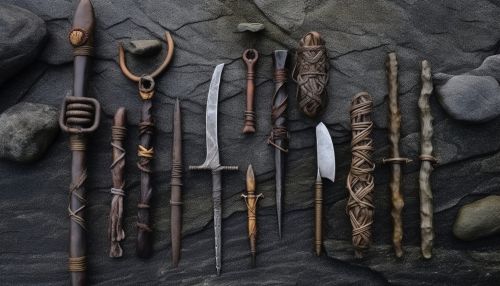Iron Age
Introduction
The Iron Age is a period in human history that follows the Bronze Age and precedes the Middle Ages. It is characterized by the widespread use of iron or steel. The adoption of these materials coincided with other changes in society, including differing agricultural practices, religious beliefs and artistic styles. The Iron Age is the final epoch of the three-age system, preceded by the Stone Age and the Bronze Age.
Characteristics
The Iron Age is defined by the production of iron or steel tools and weapons. This period saw the widespread transition from the use of bronze to iron and steel. Iron, as a material, is superior to bronze in that it is harder and more durable. This made iron tools and weapons more effective and reliable, leading to significant changes in the way societies functioned.


Chronology
The timing of the Iron Age varies significantly depending on geographical location. In the Middle East, for instance, the Iron Age is traditionally considered to have begun around 1200 BC. In other parts of the world, such as Sub-Saharan Africa, the Iron Age did not begin until the early 1st millennium AD. The end of the Iron Age is often linked with the spread of Roman culture in the western world, and the onset of the Middle Ages.
Iron Age Cultures
Different cultures entered the Iron Age at different times. In the Near East, the Iron Age is divided into two subdivisions, Iron I and Iron II. Iron I illustrates both continuity and discontinuity with the previous Late Bronze Age. There is no definitive cultural break between the 13th and 12th centuries BC throughout the entire region, although certain new features in the hill country, Transjordan, and coastal region may suggest the appearance of the Aramaean and Sea People groups.
The Phoenicians and the Assyrians are some of the major cultures that were prominent during the Iron Age. The Phoenicians were a seafaring people who established colonies throughout the Mediterranean, while the Assyrians were a powerful land-based empire in Mesopotamia.
In Europe, the Iron Age is divided into the Early Iron Age, the Middle Iron Age, and the Late Iron Age. Each of these periods is characterized by distinct cultural practices and technological advancements. The Celts, for example, were a prominent culture during the European Iron Age.
Iron Age Technology
The technology of the Iron Age is characterized by the use of iron and steel tools. Iron tools were harder and more durable than their bronze counterparts, which led to significant changes in agricultural practices. The increased effectiveness of iron tools allowed for more intensive farming, which in turn led to population growth and the development of more complex societies.
Iron was also used in the construction of buildings and structures. The use of iron in architecture allowed for the construction of larger and more complex structures, which had a significant impact on the development of urban societies.
Iron was also used in the production of weapons. Iron weapons were superior to bronze weapons in terms of durability and effectiveness, which had a significant impact on warfare during the Iron Age.
Iron Age Art
Art during the Iron Age was characterized by the use of iron and steel. This included the production of iron sculptures and decorations, as well as the use of iron in the construction of buildings and structures. Iron Age art often depicted scenes from mythology and daily life, and was used to express religious beliefs and social status.
Conclusion
The Iron Age was a period of significant technological advancement, characterized by the widespread use of iron and steel. This period saw major changes in society, including the development of more complex societies and the spread of new religious beliefs. The Iron Age is a crucial period in human history, marking the transition from the Bronze Age to the Middle Ages.
